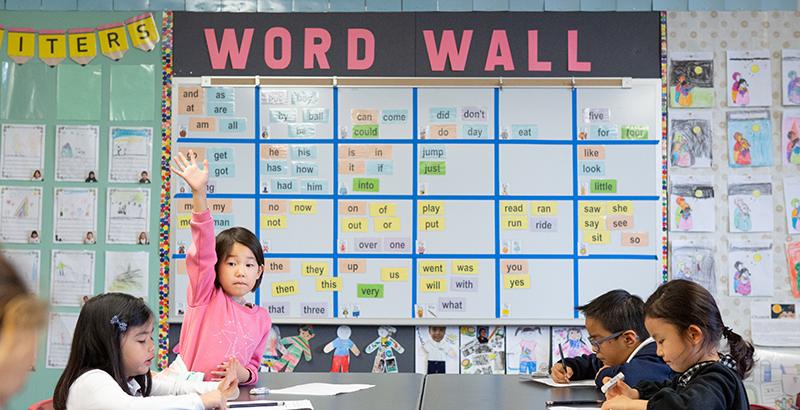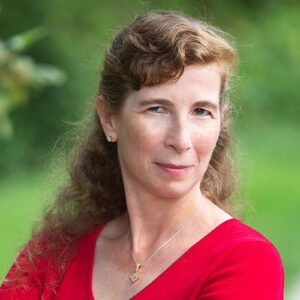Adams: Children Don’t All Learn the Same Way, or on the Same Timetable. So Why Should Our Education System Be One-Size-Fits-All?

Prior to COVID-19, education in America was absolutely equal for every child.
Are you done laughing yet?
Good. Now let’s get serious.
Prior to COVID-19, education in America was absolutely not equal for every child. Whether you are comparing state to state, city to city, district to district, school to school, or even classes within schools.
As COVID-19 wreaked its havoc across the country, Americans were forced to admit that some schools were better prepared, some teachers went the extra mile and, yes, some parents had the resources to either stay home and help their children with remote learning or hire someone who would do it for them.
This last piece is why American education can never be equal. Because you can’t control for what happens in a child’s home. Come September, some parents will create learning pods to supplement what their children are not getting at school. Some will enlist tutors to guide students through the material some teachers aren’t teaching but are just putting up YouTube videos and worksheets for. Even if you could outlaw the above two practices, can you stop parents from reading to their child? Can you stop them from demonstrating fractions while baking? Can you stop them from speaking a second language, or playing music, or taking their kids out to play catch?
Also, and I know some teachers refuse to believe this, there are even children who enjoy a subject so much that they pursue it on their own, without professional supervision!
Anything that goes on outside the classroom gives the child who is receiving such enrichment an advantage over the child who isn’t. Unless all children are removed from their families at birth, forbidden from pursuing their interests independently and placed into identical, Brave New World-style learning pods, that’s not going to change.
Socioeconomics play a part, of course. But they don’t tell the entire story. Two working-class parents can have completely different child-rearing philosophies. One spends every weekend at the library and quizzes them with flash cards on the bus. The other doesn’t, because the family prioritizes other activities. Such disparities exist in high-income families as well.
Then there’s the matter of different aptitudes. At one point, in my house, the third-grader was helping the eighth-grader with his math homework, while the kindergartner was dictating the third-grader’s spelling sentences for him.
People will always be different, think differently, and have different interests and talents, not to mention different priorities and ambitions for their lives. We used to think that was a good thing. We used to count that as part of diversity.
Education can never be equal because education doesn’t happen only in schools. It happens every moment of a person’s life. And those moments will inevitably be different.
But the education that happens in schools can be equitable.
Education in schools can be equitable if we agree on what every single child is entitled to receive from the American school system. And then we make sure that every child receives it.
What does that mean, in practice?
To start, it means equity in school facilities. No more 5,000 square feet of brand-new classroom space at the wealthy school while the low-income school begs for working auditorium lights and an exterminator.
It means not sending the least competent teachers to the schools whose students need great teaching the most (i.e., the ones who can’t afford the outside enrichment). Equity is not funding every school exactly the same; it’s funding each school based on the needs of its students.
It means not promoting students just because they’ve reached a certain age, thus leaving them with gaps in their knowledge that will only multiply over time until, by high school, they are completely lost and have no means of catching up. Unshackling age from academic level will also make obsolete the concept of an achievement gap. It won’t matter when a child learned a certain concept. The only thing that will matter is that s/he eventually mastered it before leaving school. The same goes for the “lost learning year” everyone is currently mourning. Yes, a year of learning will be lost as far as months of a calendar go. But the learning that child would have gotten during that year won’t be lost, because the child will still be taught the material, not just pushed up another rung of the ladder. The knowledge won’t be lost.
It means setting free those kids who have already mastered required material and not forcing them to serve out a predetermined amount of time in the school system, as if it were a jail sentence, in the interest of school funding.
It means assessing children to see what they know and what they don’t know, and using those assessments to fill what my teacher husband calls their “gopher holes of knowledge.” So they don’t trip them up later.
It means teachers actually teaching material and not counting on the outside tutors who are so often responsible for “great” schools’ “great” test scores to pick up the slack.
And it means believing that the bar we choose to set is accessible for all children, not just some. That all kids can learn to read, that all kids can learn to do algebra. (Remember, I’m the wacko who believes all kids could handle an NYC gifted and talented curriculum, and suggested letting families opt in instead of being tested for it.)
But believing that all kids can learn doesn’t mean believing they will all learn in the same way or on the same timetable. To bring about educational equity, we need to stop thinking of education as an application for which one size fits all.
Children’s clothes are often labeled by age. But my leggy 4-year-old nephew needs to wear size 6 pajamas. My tiny daughter, at age 6, was still wearing size 4 shirts.
Some people are taller. Some people are shorter. We don’t insist on them wearing the clothes labeled for their age. We dress them in the clothes that fit them.
We do it because one size does not fit all. The same way one age cohort does not fit all. One pedagogical approach does not fit all. One type of assessment does not fit all.
Let’s give every American student the gift of equity by seeing all children as individuals and providing them with the support they need to meet the standards we set regardless of age, parental income or any other — inevitably unequal —- outside factors.
Alina Adams is a New York Times best-selling romance and mystery writer, the author of Getting Into NYC Kindergarten and Getting Into NYC High School, a blogger at New York School Talk and mother of three. She believes you can’t have true school choice until all parents know all their school choices — and how to get them. Visit her website, www.NYCSchoolSecrets.com.
Get stories like these delivered straight to your inbox. Sign up for The 74 Newsletter

;)
